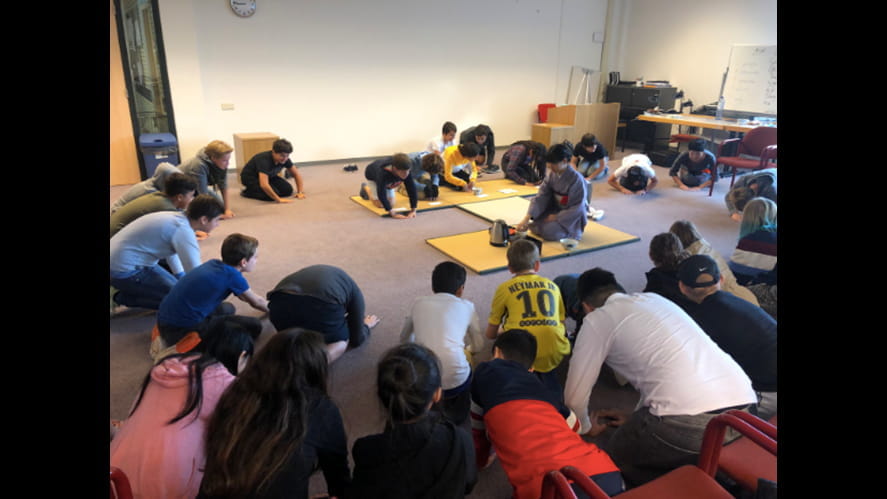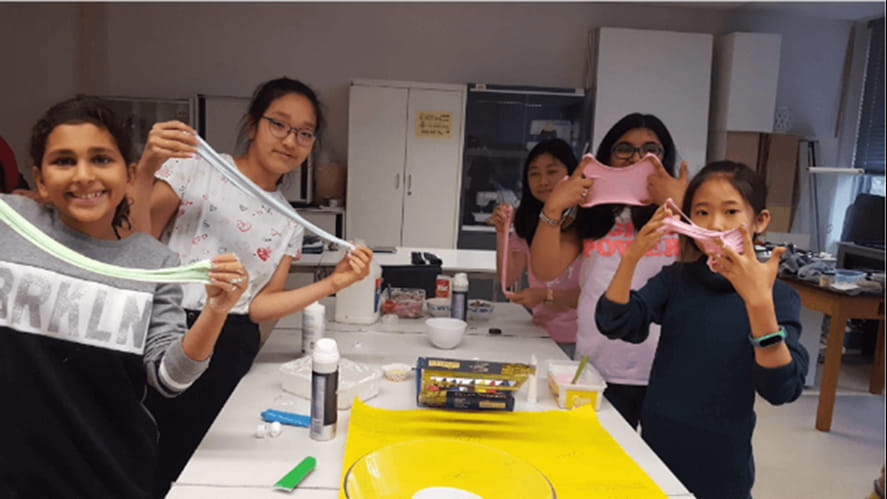Japanese Tea Ceremony Demonstrations
New NAISR grade 9 student, Coco, has been giving Japanese Tea ceremonies since she was 6 years old. Read on to find out what her classmates thought of the demonstration.
New NAISR grade 9 student, Coco, has been giving Japanese Tea ceremonies since she was 6 years old. She very kindly offered to show her classmates a Japanese tea ceremony in preparation for a lesson on Japanese literature and then again for all Middle School students.
The EAL program at NAISR fosters inclusion and a sense of belonging for our students. The program aims to support students in their linguistic, cultural, social, and emotional transitions while providing the appropriate scaffolding to help them be successful in and out of the classroom.
Of the ceremony, one of Coco's classmates, Kat, wrote:
"The Japanese tea ceremony is a cultural and relaxing event. The ceremony began when the guests all sat down in their places, and four guests were chosen. They sat at a separate table and were handed Japanese, paper-like napkins. Coco then began the ceremony by taking out a lacquered box and opening it, taking out all the materials needed to make the matcha tea. On the table at which she was working there was a fancy-looking, small mat with cute Japanese sweets. They were white-ish yellow, and looked chalk-textured. They had a tiny wing as well, making them appear as birds. Coco’s sensei put down a small cylinder which contained little candies called konpeitos, sealed with a cork. We watched Coco brew the tea, and did it with much detail and caution. She began by wiping the bowl clean, pouring in some water and something else, pouring it into another bowl, mixing in some matcha with a bamboo whisk, then cleaning the bowl again and repeating the process. First, I tasted the chalk-like sweet which was indeed sweet and had a burst of flavor. It tasted good. I tasted the tea next, which was amazing. Despite not liking bitter tea and preferring sweet tea, I genuinely loved the matcha tea that she served… and the konpeitos were a nice candy to end with."
Middle School classes were then also able to experience a Japanese Tea Ceremony together. Coco and her mother shared the traditional culture that best represents Japanese hospitality.
Each movement of the intricate tea procedure has the style like a ballet dance.
The students first tasted some prepared tea and then observed Coco while she performed the ceremony, making more tea for some special guests.
She started with purifying the tea container. This action is symbolic of self- purification as well as an act of dedication to the guests.
Next, Coco softened the whisk she would stir the tea with. The green powder is then added, as well as hot water. The tea with ‘fluffy bubbles’ is ready!
Coco turned the tea bowl so that the front of it is facing the guest when serving it.
This is an expression of the hospitality.
The tea bowls had beautiful patterns.By turning the bowl in a specific way, Coco showed the best view of it to the guest.
The guests then were then able to drink the tea. There are manners as to how the guests should drink the tea as well. Lastly, when the host replaces all the utensils to the original position, it is suggested that the host will be ready to welcome the guests again.
The host and the guests then bow in unison.
The students appeared enthralled watching Coco and her mother perform this beautiful ceremony. A huge thank you to them for sharing this with the MS students. Also, thank you to Rinna and Honoka, for also helping with the ceremony.







